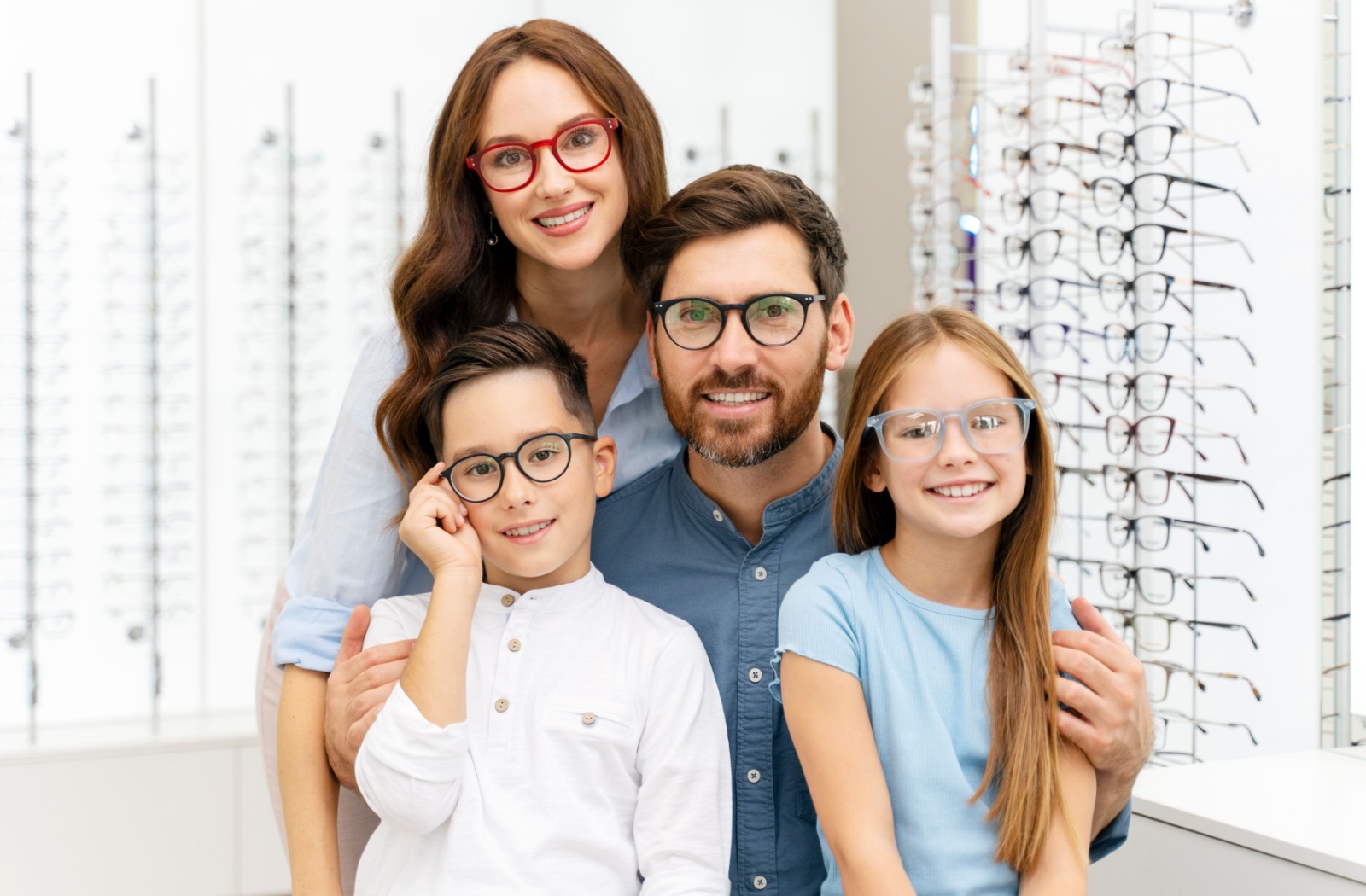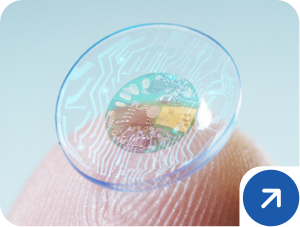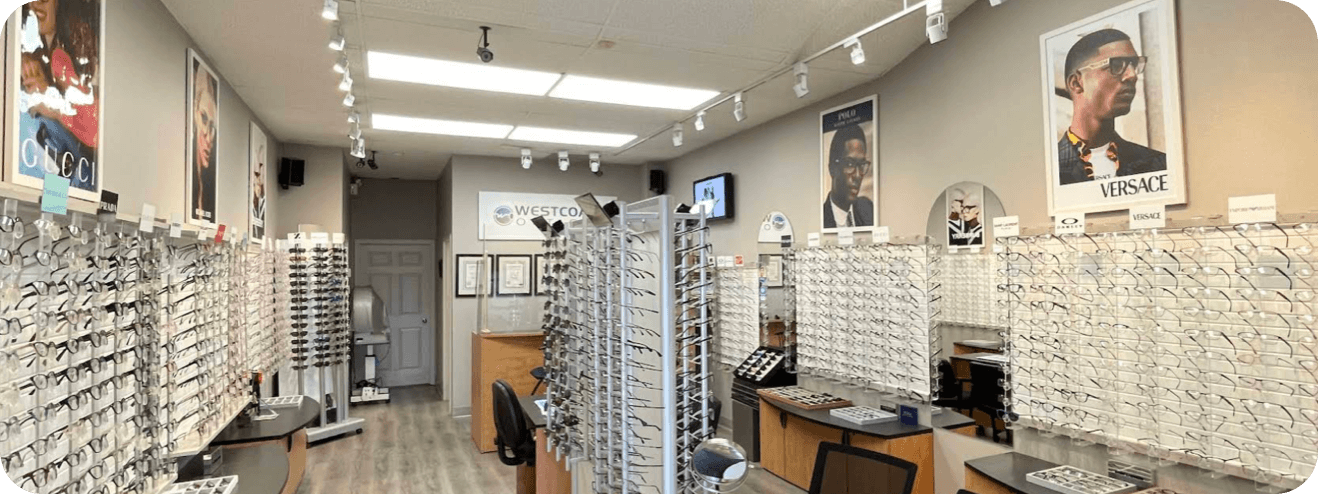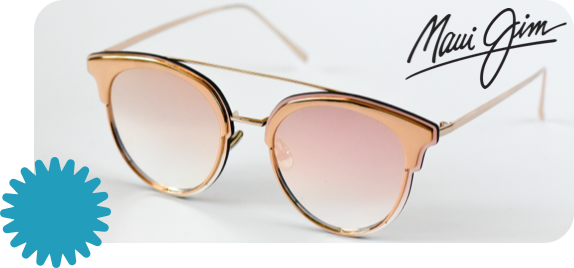When you go for an eye exam, you might hear your optometrist mention a measurement like 20/20 or 20/40 vision. While these numbers may sound technical, they provide important information about the clarity of your vision.
If you’ve been told you have 20/40 vision, you might wonder what it means, how it compares to “normal” vision, or if there’s anything you can do to improve it. 20/40 vision means that what a person with normal vision can see at 40 feet, you need to be 20 feet away to see clearly. It’s a measure of visual acuity, indicating slightly less sharp vision than the standard 20/20.
To get a better understanding of your vision, start by booking an eye exam with our talented eye team at West Coast Optical.
How Is Vision Measured?
Vision is typically assessed using what’s called the Snellen chart, which is that familiar chart with rows of diminishing letters. When ophthalmologists or optometrists test your eyesight, they ask you to read rows of letters or symbols on this chart from a standard distance of 20 feet. The measurements you hear, such as 20/20 or 20/40, come from how well you recognize those letters under specific conditions.
The first number in the fraction (the “20” in 20/40) refers to the distance in feet at which the test is conducted. The second number indicates the smallest size of text you can read at that distance compared to a person with “normal” vision.
For example:
- If you have 20/20 vision, it means you can see at 20 feet what a person with standard vision can also see at 20 feet.
- If you have 20/40 vision, it means you must be at 20 feet to see something that a person with “normal” vision can see clearly from 40 feet away.
What Does 20/40 Vision Mean?
Having 20/40 vision might indicate that your eyesight is not quite as sharp as it could be. It suggests that your eyes struggle a little more than average to resolve fine details. While 20/20 vision is considered “normal,” it’s important to note that 20/40 vision is still within a functional range and is often classified as mildly impaired or subnormal vision.
You can still legally drive in some areas with 20/40 vision, although restrictions may apply, and some additional corrective measures, like glasses, might be advised. However, activities that require sharp detail—like reading small text from a distance—can feel more challenging.

Causes of 20/40 Vision
There are many reasons why someone might have 20/40 vision, and in most cases, it’s tied to common visual conditions that can affect people of all ages. These include:
Refractive Errors
Refractive errors occur when the shape of your eye causes light to bend incorrectly, resulting in blurred vision. Common refractive errors include:
- Nearsightedness (myopia): Difficulty seeing distant objects.
- Farsightedness (hyperopia): Difficulty focusing on nearby objects.
- Astigmatism: An imperfection in the curvature of your eye that causes distortions in vision.
Presbyopia
Presbyopia is an age-related condition that usually develops after age 40, where the eye’s lens becomes less flexible, making it difficult to focus on close objects. While presbyopia mostly affects near vision, it can also lead to a general decline in clarity.
Eye Conditions or Injuries
Certain conditions, such as cataracts, glaucoma, or corneal scarring, can impact your visual acuity, resulting in measurements like 20/40 vision.
Digital Eye Strain
Increased screen time can lead to eye fatigue and temporary blurry vision, which sometimes mimics the effects of having a refractive error.
Uncorrected Vision
Many people with 20/40 vision simply haven’t had their eyes properly corrected with glasses or contact lenses. A pair of prescription lenses can often bring their vision back to 20/20.
How 20/40 Vision Can Impact Daily Life
For many, 20/40 vision might seem like only a minor inconvenience. However, depending on your lifestyle, it can pose challenges.
- Driving: Seeing road signs at a distance, particularly at night or in adverse weather, can become more difficult.
- Reading: Small text in books, on screens, or on labels might appear blurry without assistance.
- Sports or Hobbies: Activities requiring precise hand-eye coordination, like playing tennis, sewing, or painting fine details, could be affected.
While many people adapt to 20/40 vision without much difficulty, others might find that it impacts their quality of life enough to seek help.
How to Treat or Correct 20/40 Vision
The good news is that there are several ways to correct 20/40 vision, depending on the underlying cause. A visit to your local optometrist, like the team at West Coast Optical, can identify the most suitable approach for your eyes. Some options include:
Eyeglasses
For many, glasses offer an easy, non-invasive solution. With countless frame styles and lens options, glasses can not only improve your vision but complement your personal style.
Contact Lenses
If you prefer a glasses-free look or need correction for activities like sports, contact lenses are a great alternative. Your optometrist can determine the best type, whether it’s daily, monthly, or even specialized lenses.
Refractive Surgery
Procedures like LASIK or PRK are popular for those looking for permanent correction. These treatments reshape your cornea to focus light more effectively, often restoring vision to 20/20 or better.
Lifestyle Adjustments
Simple changes, like taking regular screen breaks, ensuring proper lighting, and maintaining a balanced diet rich in eye-friendly nutrients, can support overall eye health and prevent further strain or decline.c
Bringing Your World into Focus
20/40 vision might not be “perfect,” but it’s far from debilitating. With the right understanding, treatments, and support, you can enjoy sharp, clear vision that allows you to tackle life’s activities with confidence. Whether it’s getting fitted for frames, trying out contacts, or exploring surgical options, there’s always a way to improve or manage your visual health.
Our team at West Coast Optical is here for you! With over 34 years of trusted service, our professional optometrists and licensed opticians are committed to keeping your eyes healthy. Don’t wait—schedule your comprehensive eye exam today and see the difference.















